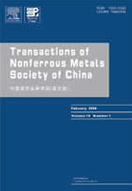Effect of Mo substitution of Fe on strength and corrosion resistance of AlCoCrFe1-xNiMox high-entropy alloys
(1. School of Information Engineering, Suqian University, Suqian 223800, China;
2. College of Materials Science and Engineering, Nanjing Tech University, Nanjing 211816, China;
3. Jiangsu Collaborative Innovation Center for Advanced Inorganic Functional Composites, Nanjing Tech University, Nanjing 211816, China)
2. College of Materials Science and Engineering, Nanjing Tech University, Nanjing 211816, China;
3. Jiangsu Collaborative Innovation Center for Advanced Inorganic Functional Composites, Nanjing Tech University, Nanjing 211816, China)
Abstract: A series of AlCoCrFe1-xNiMox high-entropy alloys (HEAs) were fabricated and characterized by XRD, SEM, EDS mapping, compression test, hardness and electrochemistry measurements. The research results indicate that after Mo completely replaces Fe, the compressive strength of the alloys can reach 3181 MPa because the addition of Mo can form σ phase beneficial to the grain refinement, thereby improving the strength of the alloys. However, the addition of Mo has a detrimental effect on corrosion resistance as a result of formation of galvanic cell between the substrate and σ phases. Although most of AlCoCrFe1-xNiMox have lower corrosion current densities than pristine alloy, a partial Mo substitution (x=0.25) widens the passivation region of HEAs. The inconsistency of mechanical properties with corrosion resistance is ascribed to different roles of Mo in phase formation and protection of passive film.
Key words: high-entropy alloy; Mo substitution of Fe; compressive strength; corrosion resistance

